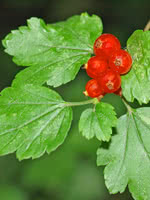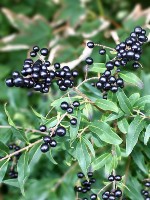Mon-Fri 9am - 5pm Mountain time
Alpine Currant vs Wild Privet
Ribes alpinum
Ligustrum vulgare
NOT AVAILABLE THIS SEASON - MIGHT RETURN
NOT AVAILABLE THIS SEASON - MIGHT RETURN
Alpine Currant is a great shrub to plant along sidewalks, near building or at your property boundary as a hedge or accent species. It is widely used by commercial landscapers in parking lots and near buildings because of its hardiness, attractiveness, and pollution tolerance.
While Alpine Currant produces edible berries, they are not palatable.
Wild Privet is a fast growing ornamental shrub that is well suited for forming hedges and privacy screens. It will retain its leaves in warmer climates but drops them in colder areas. They have small white flowers, though the smell is often considered unpleasant. While the berries are inedible, they are a good food source for many bird species.
It is recommended to prune Wild Privet immediately after flowering, as it can readily self seed. It is deer and rabbit tolerant. It can grow in dry areas, on slopes, and withstand the wind making it well suited for many growing conditions.
Alpine Currant Quick Facts
Wild Privet Quick Facts
Toxicity: If ingested, all parts of this plant will cause severe discomfort. Toxic to dogs, cats, and horses

